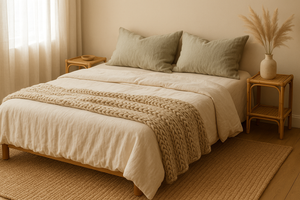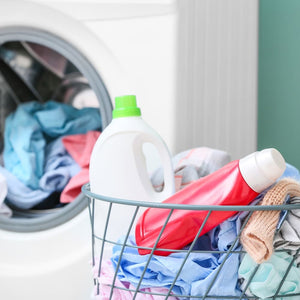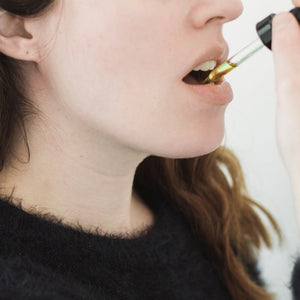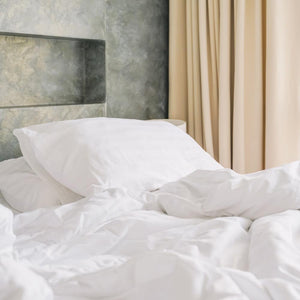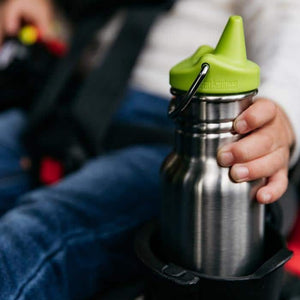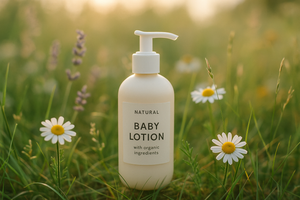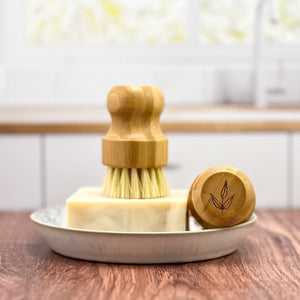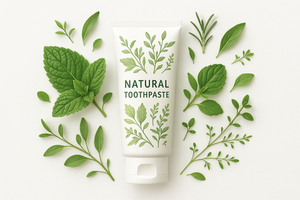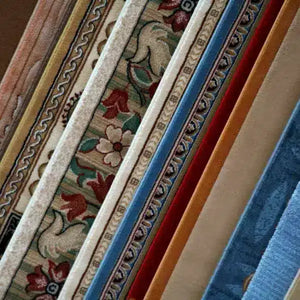Is there such thing as non-toxic composite wood?
-Choose plywood over similar materials. Plywood typically off-gasses less than do MDF or particle board.
-Look for certifications. Make sure that they any piece of composite wood furniture is compliant with TSCA Title VI or CARB II. GREENGUARD and GREENGUARD Gold are even better. You’ll read more about these certifications below.
-If you’re in the market for plywood for a building project, check out PureBond plywood, which is formaldehyde-free.
Adhesives
We've already established that the glues used composite wood are often toxic. The same adhesives are also used to hold together different parts of a piece of furniture.
So even furniture made from solid wood may include adhesives in the joints and elsewhere--and these will be similarly problematic in terms of formaldehyde.
Paints, Stains, & Other Finishes
Choosing only solid wood furniture is a great start, but furniture finishes can be another source of toxins. It is often difficult to determine exactly what materials are used in wood finishes, especially when it comes to products from a big-box furniture store.
Fortunately, most wood finishes emit their fumes during the application and drying or curing processes; once fully cured, most wood finishes are inert and non-toxic.
Clear finishes can contain high levels of volatile organic compounds (VOCs, or the fumes you might smell), although these too will dissipate with time. Many furniture manufacturers add solvents to their finishes to decrease the time it takes for them to cure. Common wooden finisher solvents contain arsenic and beryllium, which are of particular concern if used on a tabletop or other food-adjacent surface.
Fortunately, there are several safer wood finishes, including:
- Tung oil. If you can choose your finish, or are finishing a piece of wooden furniture yourself, tung oil is a great option. Be sure to choose tung oil formulated without driers.
- Linseed oil. Linseed oil can provide a toxin-free finish, but you need to be sure you get either raw linseed oil or polymerized boiled linseed oil. Avoid the common “boiled linseed oil” that doesn’t specify that it is polymerized. Boiled linseed oil is blended with plasticizers, hardeners, and heavy metals. You can read more on linseed oil here.
- Beeswax. Beeswax-based finishes can be non-toxic, but these need to be melted down and mixed with tung or linseed oil to be applied. Once again, you’ll need to make sure you’re getting the right kind of either of those (see above).
- Shellac. A byproduct of a type of bug, shellac can be a great toxin-free finish. Unfortunately, it often contains a toxic solvent, the most concerning of which is methanol.
- Water-based finishes. Some water-based finishes are non-toxic, but be aware that not all of them are. We like AFM Safe Coat DuroStain. Although not “natural,” water-based polyurethane finishes are safe. Be sure to avoid oil-based polyurethane finishes, though, as these are decidedly toxic.
- Paints, stains, and other colored finishes. Colored finishes like paints and stains can emit high levels of VOCs during application and drying. You can learn more about safer paint options here.
If you’re using any oil-based products to finish wooden furniture yourself, be sure to do so in a well-ventilated space to reduce your exposure to VOCs.
Because everyone asks about Wayfair…
As you probably know, Wayfair is a huge importer of furniture that’s made all around the world. Their catalog is so vast (and changes by the minute) that it is impossible to review even a fraction of their wooden furniture. Wayfair certainly offers some solid wood options, but they don't seem to offer much furniture with certifications of any kind.
Non-Toxic Wooden Furniture Labels & Certifications
There are a few key labels and certifications to look for to identify safer or non-toxic wooden furniture.
As we've mentioned, formaldehyde is the most concerning toxin in most wooden furniture. In the United States, the EPA has acted to limit formaldehyde emissions.
All composite wood products made or sold in the United States must have the label "TSCA Title VI compliant." For products manufactured or imported prior to March 2019, look for that label or one that specifies that the items is CARB ATCM Phase II compliant.
TSCA Title VI sets limits on formaldehyde emissions, but compliance does not mean that products are formaldehyde-free or totally safe. A voluntary and more comprehensive standard is GREENGUARD certification, which limits VOC emissions, including but not limited to formaldehyde.
There are two levels of GREENGUARD certification. GREENGUARD Gold certification is the highest bar. For comparison, furniture with the GREENGUARD Gold certification cannot emit more than 220 micrograms total VOCs per cubic meter, whereas the standard GREENGUARD certification allows up to 500 micrograms.
Also, whenever possible, look for products that have the FSC (Forest Stewardship Council) seal of approval. This ensures that products come from responsibly managed forests that provide environmental, social, and economic benefits. This label does not promise non-toxicity, however.






































